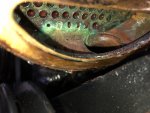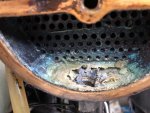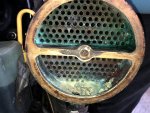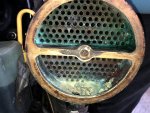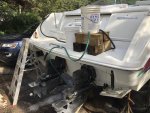- Joined
- Jul 18, 2011
- Messages
- 18,137
Today was winterization day for my twin Mercruiser 7.4 LX MPI with Full Closed Cooling (never understood what the 'LX' was for . . .) Anyhow . . .
I pumped out the gasoline (44 gallons) and mixed up about 7 gallons of 'fogging cocktail' and added it back to the tank. The rest of the gas goes to the cars.
I set up my 'bucket-to-earmuffs' contraption that I use for winterization.

There were similar deposits in 2016 when I inspected and cleaned them. The salt-away does not seem to do much with these deposits; you really need to open the H.E. up and scrape the deposits away. I think the 6-7 holes that tend to get blocked represent about 15-20% of the cooling capacity. So, it is a good thing to check your Heat Exchangers often, if you run in salt water, as I do.
:thumb:
I pumped out the gasoline (44 gallons) and mixed up about 7 gallons of 'fogging cocktail' and added it back to the tank. The rest of the gas goes to the cars.
I set up my 'bucket-to-earmuffs' contraption that I use for winterization.

There were similar deposits in 2016 when I inspected and cleaned them. The salt-away does not seem to do much with these deposits; you really need to open the H.E. up and scrape the deposits away. I think the 6-7 holes that tend to get blocked represent about 15-20% of the cooling capacity. So, it is a good thing to check your Heat Exchangers often, if you run in salt water, as I do.
:thumb:
Attachments
Last edited:




















